Irish brides and grooms were said to be brought good luck if the sun shone on the bride on the day of the wedding, or if they heard a cuckoo, or if they saw three magpies.
 |
| Picturesque Holland : newly wedded couples returning from church at Edam. |
 |
| 1881 depiction of a German wedding procession |
Austrian brides avoid white and red flowers for weddings. A superstition exists that the colors mean bandages and blood. Unlucky was Austrian bride who had to make her own wedding gown and unlucky the groom too, if he saw her in it, prior to nuptials.
 |
| 1887 depiction of the French Bride and Groom |
Ukranian brides and grooms made a ritual tree, or hiltse, for the wedding table on the Friday night before they wed.
In Lithuania, brides and grooms are given a meal of wine, bread and salt ~ symbolic of joy, sweat and tears.
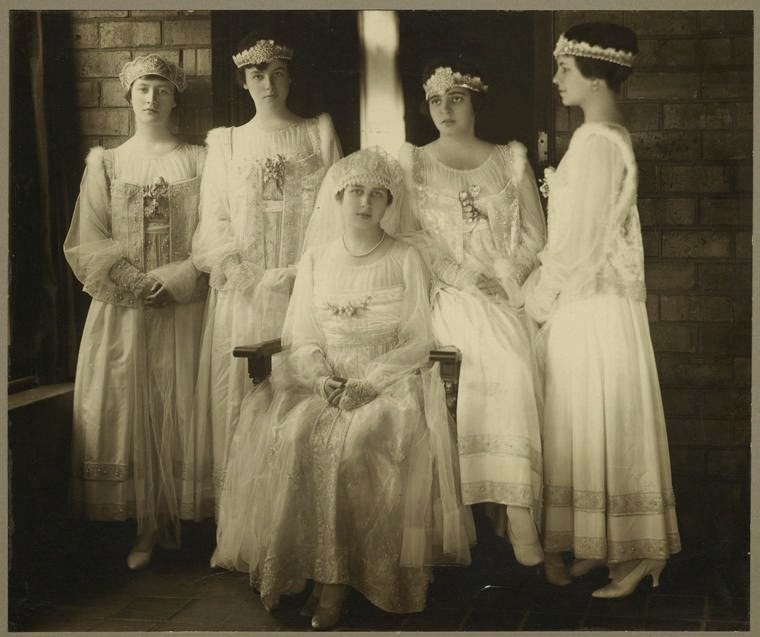 |
| Mrs. Edsel B. Ford's bridal party, 1916 |
If a Danish bride is out of the reception room, female guests may kiss the groom on the cheek and vice versa.
Mongolian brides and grooms killed a chicken together and then would inspect the livers for any good omens.
In Argentina the mother of groom and the father of the bride stand next to them both throughout the ceremony.
Kuwaiti brides and grooms were chosen from relatives and matchmakers were hired if no ideal relative was found.
A Nigerian groom’s family 'paid' a bride 'price.' Traditionally this consisted of shoes, bags, clothes and jewelry.
Kuwaiti brides and grooms were chosen from relatives and matchmakers were hired if no ideal relative was found.
 |
| A Dinka bridegroom from the Sudan, "bargaining for the bridal ornaments" in 1931 |
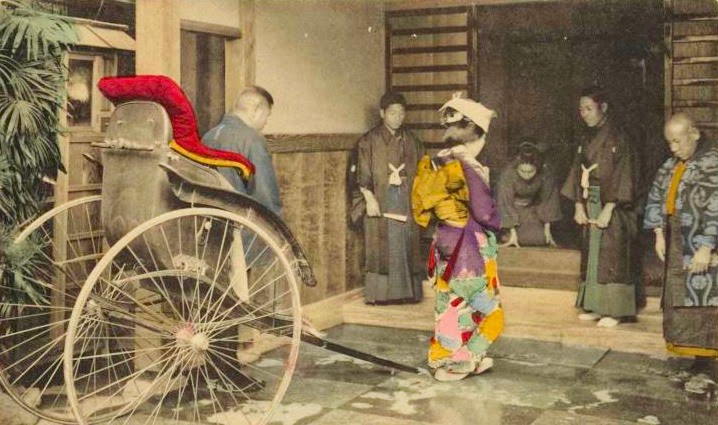 |
| Photograph of a Japanese bride who has been taken to her husband's house followed by her relatives and friends in nuptial procession. |
 |
| The Japanese bride's furnishings were removed from her home and taken to the groom's home, the day before a wedding. |
In Japan a groom gave his bride a kimono to wear on a ceremonial visit to his parents on third day of marriage.
 |
| A Korean bride and groom in 1920 |
Russian brides and grooms traditionally wed in autumn. Summer work was over, barns were full, and the new couples were prepared for long winter.
A ceremonial purifying milk bath before ritual henna painting of bride's feet and hands is a a Moroccan custom.
Spanish brides chose orange blossoms, symbols of happiness and fulfillment. Trees both blossom and bear fruit. Spanish brides wore black silk wedding dresses and black lace veils. Grooms wore embroidered shirts that their brides had made for them.
The Romanian bride and groom were showered with candy and nuts by their guests. This symbolized prosperity.
An Indian bride and groom are showered with flower petals by the groom's brother at the end of the ceremony.
The newly married bride and groom of Bermuda planted a tree, symbolizing their union and their love.
A Roman groom led a procession to a bride's home and she was escorted by her bridesmaids to greet him. The Roman bride wore a white tunic with a Knot-Of-Hercules belt. Orange wedding shoes and a veil were very fashionable for the elite Roman brides. The superstition of tripping over the threshold of one's new home comes from the Roman Empire. Groom's were very cautious not to trip, and they carried their brides over to ensure that their new bride didn't trip either.
Weddings were the most festive occasions in Norwegian country life, and in some parts the feast extended over two or three days.
The Czech bride wore a wreath of rosemary to symbolize wisdom, loyalty and love.
The Czech bride wore a wreath of rosemary to symbolize wisdom, loyalty and love.
 |
| Depiction of an Armenian marriage procession |
In Armenia a groom's family brought gifts to bride’s family the night before. These traditionally included a veil, her shoes and more.
In Italy, male guests of the bride and groom were given cigars, female guests were given candied almonds. In parts of Italy, the groom's tie would be cut up in pieces and auctioned off to all of the guests.
In Italy, male guests of the bride and groom were given cigars, female guests were given candied almonds. In parts of Italy, the groom's tie would be cut up in pieces and auctioned off to all of the guests.
On the third day of marriage, a Chinese bride and groom returned to the bride's parents' home for a dinner party with their relatives.
A Swedish bride's bouquet was made of flowers with strongest scents to ward off trolls and other evil creatures.
A Brazilian bride placed her shoes in the dance floor's center. Guests placed donations in them for the newlyweds.
A Brazilian bride placed her shoes in the dance floor's center. Guests placed donations in them for the newlyweds.
Swiss bridesmaids would sell colorful handkerchiefs to guests. All of the money went to the bride and groom.
Maoris of New Zealand still include a powhiri, or welcome, conducted by a tribal elder and the couple is blessed.
French couples gave wedding guests 5 dragées (candy), symbolizing health, wealth, happiness, longevity and fertility.
A Filipino groom's family gave the bride and groom the gift of old coins, as symbols of future prosperity.
 |
| The Turkish bride depicted from behind. |
 |
| Explanation of the Turkish bride in her wedding dress, and the rituals performed prior to the wedding. |
Pairs of padrinos and madrinos (Godparents), help brides and and grooms with each part of Hispanic weddings.
🍽️Etiquette Enthusiast, Maura J. Graber of The RSVP Institure of Etiquette, is the Site Editor for Etiquipedia© Etiquette Encyclopedia

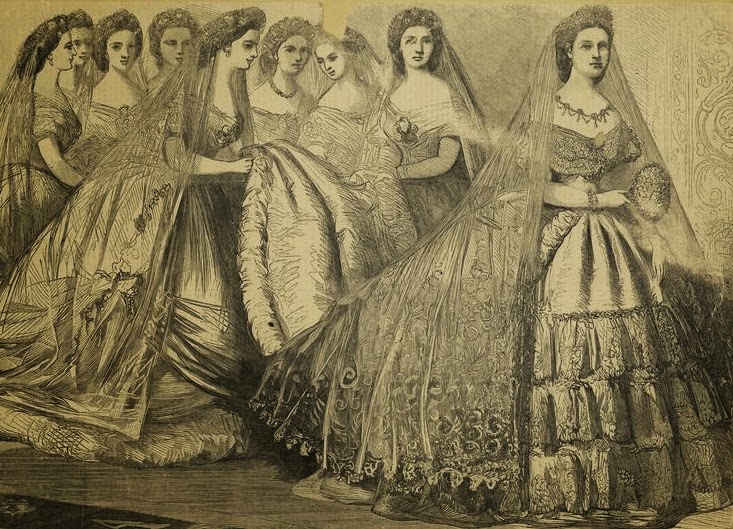
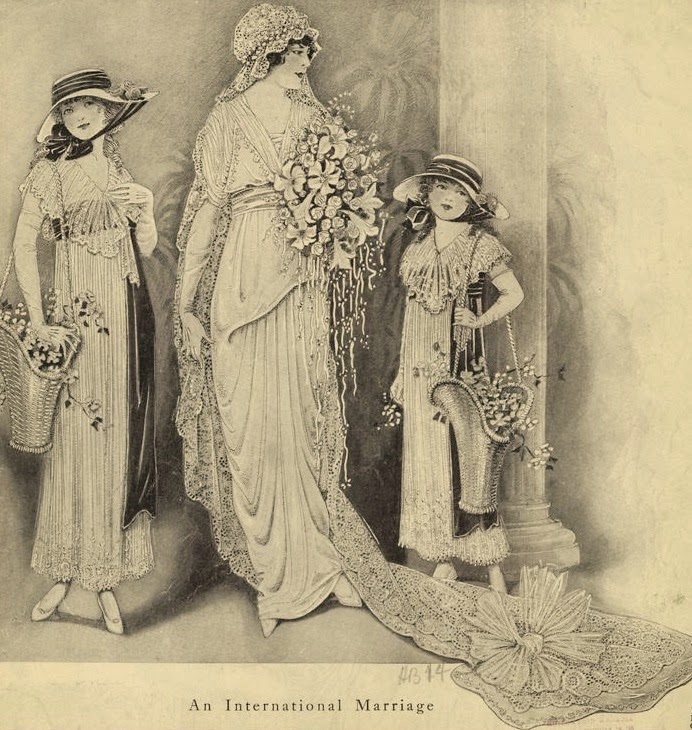
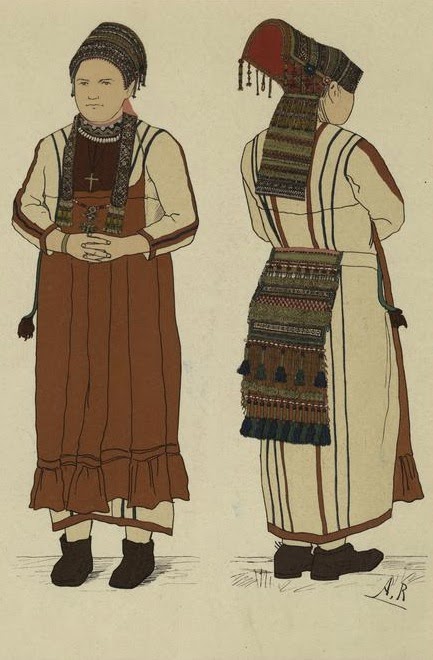
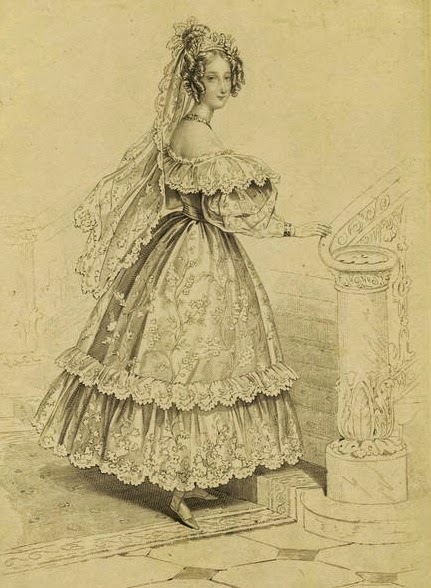

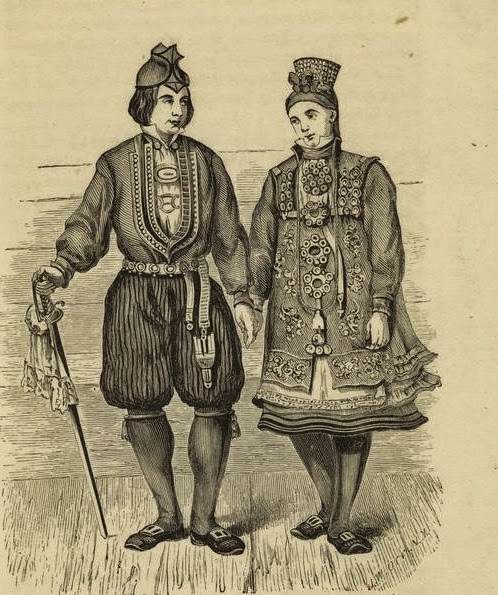
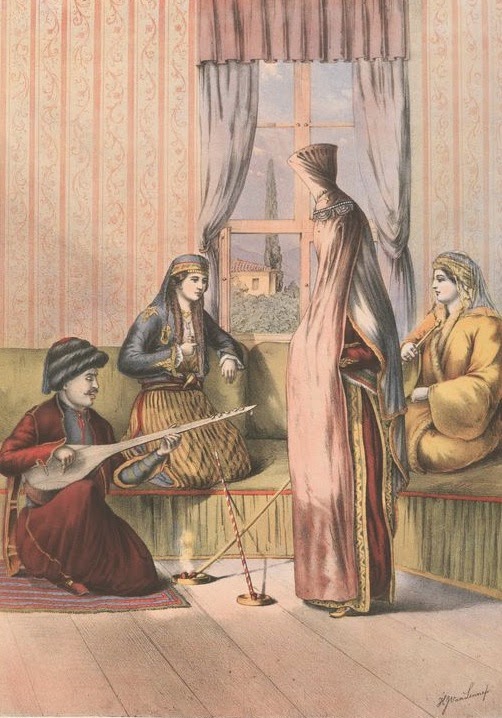
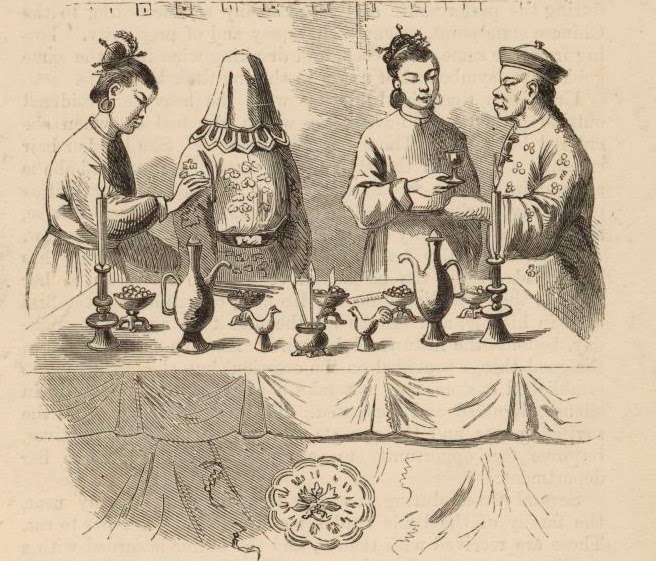
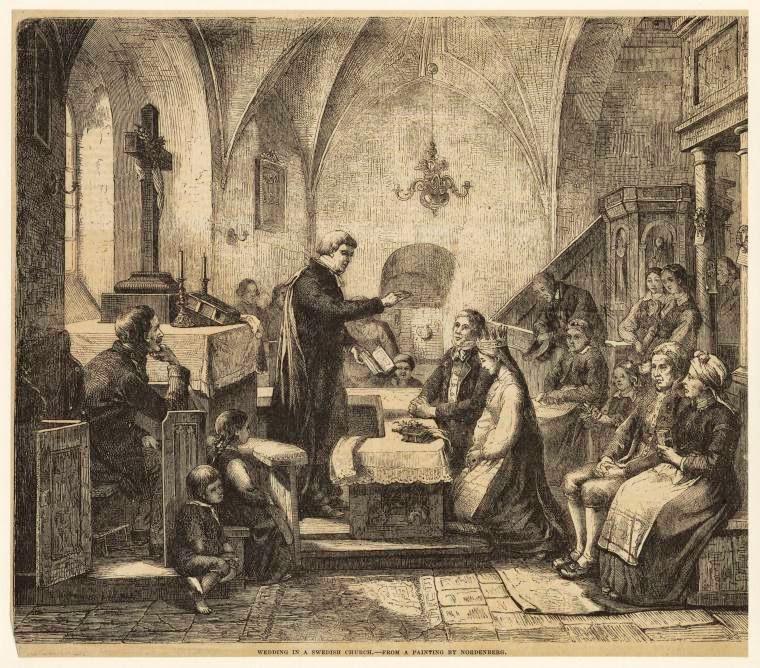



No comments:
Post a Comment
Note: Only a member of this blog may post a comment.